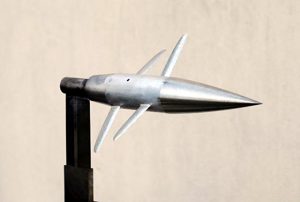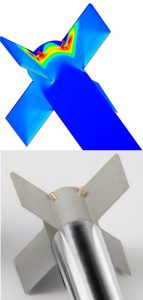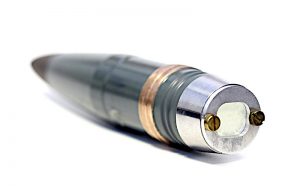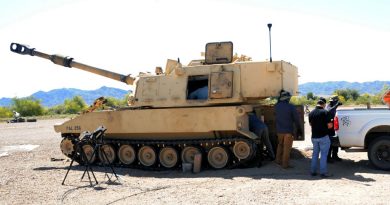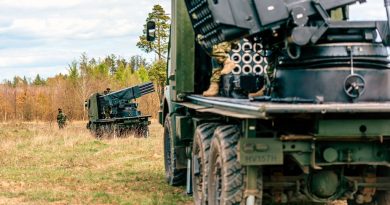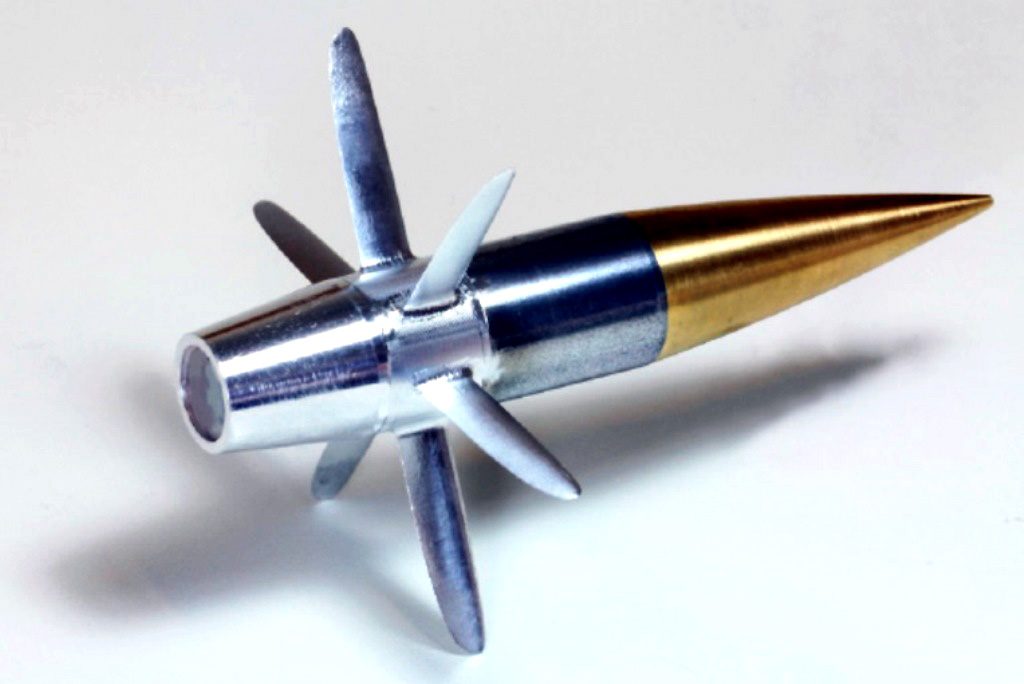
The guided ammunition way ahead; Institut Saint-Louis
By Paolo Valpolini
The military and the industry provide us hints on requirements and solutions, however to have a look ahead in what will happen in the mid-long term future Research & Technology (R&T) independent organisations can provide interesting hints. At the Future Artillery Conference, organised on-line by Defence IQ, what is probably the principal R&T European entity specialised in defence matters, the French-German Research Institute of Saint-Louis (ISL), explained which might be the way ahead.
Founded on the basis of a Convention signed in 1959, ISL is a bi-national research institute with a staff of 400, jointly operated by the French Agency of Defence Innovation (AID) and the German Ministry of Defence. The Institute’s mission is to propose innovative solutions in order to meet or even anticipate the needs of the ground armed forces and refers to the DGA, the French General Directorate for Armament, and to the BAINBw, the German Federal Office of Bundeswehr Equipment, Information Technology and In-Service Support.
Information from ISL was provided to the on-line audience by Dr. Richard Arning, the Head of the “Flight Techniques for Projectiles” Division, in charge of designing disruptive innovations for gun-launched effectors of all calibres, with a special focus on guided projectiles.
Although ISL is currently mostly working on guided munitions, Dr. Arning pointed out “we still carry out research in ballistics for special applications, such as shots at very high angle of elevation, hypersonic projectiles, and unguided projectiles for next generation MBTs.”
Speaking of the future of tube artillery, the ISL scientist underlines that “playing the devil’s advocate, the tube artillery is challenged in range, payload and precision by guided rocket artillery. Moreover the US Marines ditched their 120 mm mortars and speculations have been made in the news if the system would be replaced by loitering munitions. Similarly, the future might see a highly skilled sniper who can reach out at 800 meters become replaced by a drone for which the operator requires only one day of training.”
So what is the future of gun technology? Dr. Arning also added that the lines between guided projectiles, guided missiles and UAS have blurred as (artillery) missions and technologies respectively on-board subsystems have become pretty similar. Cost is definitely another issue. Based on open-source intelligence, Dr. Arning makes a comparison between currently available missiles and artillery guided ammunition. “For comparison reasons we take the Hellfire missile, which has similar components in terms of warhead, seeker, and eventually propulsion; its reported price, depending on the model and on the contract, has fallen from 116,000 US$ of the British contract to 70,000 for the US Air Force, 45,000 for the US Navy, down to 31,000 for larger procurements planned. Looking at guidance retrofit kits, the APKWS II cost is around 28,000 US$, while a PGK is worth some 20,000 US$. As for bigger systems, the GMLRS cost was short of 200,000 US$, keeping in mind it has a 90 kg payload, while the GMLRS-ER, the extended range one currently in development that increases its reach from 70 to 150 km, is cited with half that price. As for artillery guided projectiles, which means Excalibur and Vulcano, their cost might vary from 70,000 to 150.000 US$. So the guided projectile is not necessarily cheaper – yet.” The “yet” at the end of his sentence means of course that being in their first generation or infancy of development still, guided projectiles for tube artillery have plenty of room for improvements, which might also bring to a considerable cost reduction and performance improvement, similarly to what happened in the missile field. ISL is committed to make guided projectiles become a success.
The cost issue has an influence on the number of ammunition that can be fitted into tight defence budgets. According to the ISL scientist, short range artillery, up to maybe 50 km, is going to remain the backbone due to reactiveness, availability, responsiveness, as well as for the large stockpile of ammunition of standardised calibre available in countries that form the western alliance. “If unfortunately we will have to confront a high intensity scenario we might run off guided ammunition and missiles in maybe two weeks, depending on the stocks we have, and then we will be back to our backbone, the so-called dumb artillery, that works in all situations, in GPS-denied environments, bad weather, etc.,” Dr. Arning underlines. Clearly, this is a wake-up call for the procurement agencies to order sufficient stocks of this new smart munition. On the other hand, when we look at ranges of 80-100 km, collateral damages become an issue “and even if we do not go for precision or superprecision, at those ranges we need anyhow some sort of guidance,” he adds.
At ISL researchers subdivide artillery guided munitions in four categories. Generation 1 is what is available now, in terms of course correction kits that allow improving accuracy, reducing the cost per kill, upgrading existing dumb ammunition stocks. “Generation 2 rounds are characterised by maximum kinematics, with an emphasis on range and speed, and bring in some kind of non-ballistic manoeuvrability, as it already happens to some extent in the Vulcano guided projectile, which is able to dive vertically in the terminal guidance phase,” Dr. Arning explains. Adding more on-board intelligence, which makes them more jamming resistant allowing to operate in GPS-denied environment, and to provide some ISR capabilities for battle damage assessment, brings to what at ISL is considered Generation 2+ rounds. “The final step is Generation 3, which sees the addition of intelligence, dynamic intelligence saturation techniques, and collaborative guidance. I want to underline that this is not a forecast, it is our research roadmap,” he adds.
Within this roadmap, a common denominator is that this way ahead must generate systems that will feature an affordable cost. “How can we reduce the price and improve performance of second generation guided projectiles? These are the questions that drive our research. In my domain we have guidelines similar to those of the US Army research Laboratory,” Dr. Arning states before explaining the four lines of development that are followed by ISL, each of them split in three phases, short, medium and long term.
The first line of development is about the expansion of kinematics; “this for us does not mean only range, speed and precision, it also includes some type of agility. In the short term we are working on the decoupled fuse, which allows incremental type of improvements. In the mid-term we are considering long-range aerodynamic lifting configurations, while looking further into the future we go for hypersonic speed, with or without systems such as the rail gun,” the ISL scientist explains.
The second line of development aims at providing mass precision ballistic effects at affordable price; “here we have to think about a hybrid type of guided projectile, less accurate but precise enough to cope with very long ranges. A first iteration could see guidance through gas ejection, provided by some pulse thrusters to slightly correct the course. A mid term alternative will possibly be based on cheaper actuators; for instance, we are thinking at pins coming out between the fins, altering the pressure distribution, and by this allowing to change the course. The final stage of development is looking at supersonic and hypersonic projectiles maybe of asymmetric shape, and here we are testing plasma flow actuators; therefore in this futuristic type of projectile there will be no mechanical actuator at all, we will just need electricity with rather high voltage to ignite a plasma, which will change the pressure distribution that will alter the shockwaves,” the ISL scientist explains to the Defence IQ Future Artillery Conference audience.
The third development area considered by ISL aims at improving survivability in contested environment, and it is mostly related to antenna technologies. “First generation rounds have just one fixed antenna beam at the rear, as we want to avoid a huge signature in front of the target and to communicate back to fire control,” Dr. Arning explains. “The second iteration will feature electronically beam steering and beam forming antennas, where you can blend out or nullify the jammer and the direction where the jamming is coming from; we will use this for command and control links as well as for GPS antennas.” Looking further ahead, the ISL researchers are considering a more futuristic concept, in which exploiting signals of opportunity, including the jamming signals themselves, in order to understand where the round is located on the battlefield landscape, using therefore friendly as well as opponents signals for navigation purposes.
In recent years one of the most widely used words in the defence community has been “networked” and this leads to the fourth line of development pursued at ISL. “It is a rather new research topic for us, and we are looking at how to integrate the weapon, the effector and the projectile itself, into the netcentric warfare environment. The question is open, it is completely undecided yet if just fire control will be integrated or interfaced with the netcentric warfare system or the guided projectile will be interfaced directly, featuring a data link like guided missiles or loitering ammunition,” the ISL Head of Flight Techniques for Projectiles says.
Having mentioned hypersonic projectiles, Dr. Arning cannot avoid mentioning what will be the weapon of choice for accelerating those ammunition at such speed. “My colleagues at ISL are developing a futuristic electro-magnetic gun, and my department is working on the hypersonic projectile that goes with it, this type of technology allowing to achieve speeds in excess of 3,000 m/s.” This type of gun is made of two parallel rails on which a sliding armature that carries the round is accelerated by the electromagnetic effects of a current that flows from one rail to the other. “We are the only European laboratory that has a full-scale rail gun firing,” Dr. Arning says, explaining that the development is going in two directions, one heading towards a long-range system capable to launch an inert round of sufficient dimensions and weight to rely only on kinetic energy effects against the majority of targets, and a second one bringing to a machine-gun type solution, with smaller rounds, lower energy per shot, and higher rate of fire, that might become a game changer for close-in defence applications.
All images © ISL


